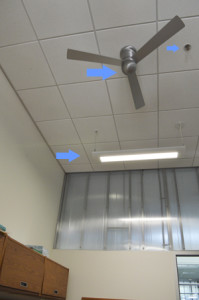WSJ: “Teens Need Later Start to School Day, Doctors Group Says”
Thursday, August 28th, 2014This entry is about the article titled “Teens Need Later Start to School Day, Doctors Group Says” by Sumathi Reddy. http://online.wsj.com/articles/teens-need-later-start-to-school-day-doctors-group-says-1408939263
The article starts with this main idea… “High schools and middle schools should begin the day no earlier than 8:30 a.m. to help teenagers get more sleep, the American Academy of Pediatrics said Monday in its first policy statement on the issue.”
The article continues by providing support for this idea. However, the correlation-causation case seems like it needs more consideration. Here are some of my thoughts on this issue:
– A fixed time such as 8:30 am seems unnecessary. We know that the circadian rhythms are biologically connected to sunrise and sunset times. Perhaps a more sound idea is that school should start at least 60 minutes after sunrise; and homework should be completable preferably by sunset (understandably impractical in general, and teachers should account for differing performance expectations after sunset – i.e., the amount of work that can be done in one hour during daylight time is less than that after dusk). So the solution – for optimization purposes – will differ based on latitude as well as daylight savings shifts, if applicable.
– A way to expand the timing benefit may be to not allow any college prep class in the first period (i.e., schedule PE, library, electives and other special courses). An alternative is to bring back a 20-30 minute home room period instead (Asian schools still have this, by the way).
– The article mentions the effect of blue light from electronics. There are also just routine home-based neurological stimulation factors – not just visual but with all other senses. A correlation-causation question arises around the influence of household evening settling time (sleep preparation) and bedtime on the lateness to which teens will go to sleep. Are parents sensitively aware that any noise during the desired sleep time could disrupt sleep? Laundry noise, television noise, working on computers, talking on the phone, etc. What about households which have pre-teens as well as teens?
– What recommendation can be made for weekends? Did the study follow the sleep patterns of the students on weekends? What about sleep patterns during holidays (both long and short)? Did sleeping in on weekends affect performance during the week?
– What is the effect of school-impacted sleep patterns on growth and body repair? Sub-optimal sleep is a chronic as well as acute health issue.
– This is not just a health problem, it is also an education problem (the article does suggest it). Educators need to be at the forefront as well. Educators control the settings and can have first-hand observations; health practitioners observe the after-effects and have little to no control over the settings. Parents should collaborate with both educators and health practitioners. Government should stay out of it.
– Are school hours set for adult convenience as opposed to educational optimization? If so, which is the priority? It’s not clear to me.
– There should be a no-caffeine rule prior to the start of school – and that includes educators as well as the students. I have observed teachers getting to school and starting the day with coffee. This is artificial stimulation and prevents teachers from being empathetic and sensing the appropriate pace to teach. Students (those not similarly caffeinated) cannot be expected to “connect” with the caffeinated teachers – and follow the teacher as they swing between caffeine hits. If caffeine is so necessary for teachers to get going, then it is quite apparent that school start times are inappropriate. [As an extension of this, perhaps teachers should not be allowed to intake any caffeine within 30 minutes of starting a class].
– I would suggest exploring the idea of inserting mindfulness or meditation times into the school schedule so that lack of focus due to disrupted sleep can be managed at school. You know the “power nap” idea, right? What are the heart rates of the students throughout the day? Is the pattern influenced by the amount of restful sleep?
So how does this relate to YCISL? It relates to some of the core ideas including:
– Use “youth” as an empathy advantage. Can our students incorporate sleep-related issues into their problem statement or solution? Can they be creative enough to develop a solution that would work for youth? Can youth see a solution that adults cannot otherwise see? Would students be able to persuade other students to adopt solutions that adults would otherwise not do so well?
– Mindset. Students need to understand the impact that sleep is having on their mindsets as well as performance. Without good sleep, can the mindset be positive? Without good sleep, can the mindset be attending to growth?
– Leadership. This is an opportunity for youth to speak up and be heard. Adults like to prescribe solutions that affect others but not necessarily themselves. Youth need to take a leadership role in ensuring a youth-centered and youth-accepted solution.
– Sustainability. What is needed is a sustainable solution that has a long-term beneficial influence and causes minimum inconvenience. Schools are forever experimenting with digressive and disruptive changes. This is unsustainable and confusing.


